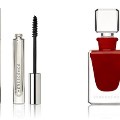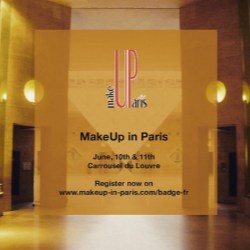If this is your company, CONTACT US to activate Packbase™ software to build your portal.


With a global growth of around 25% per year expected until 2020, 3D printing is impacting many markets, including the luxury market, with some new applications emerging. Yet this technology is not in its infancy since it celebrated its 30th anniversary in 2014. And while this technology therefore exists since 1984, it took its industry 20 years to generate its 1st billion dollars. But today its growth will allow reaching the 20 billion dollars mark by 2020.
On Friday, June 23, from 11:15am to 12:00pm, don't miss the round-table themed "3D, an industrial reality in the beauty world", moderated by Charles-Emmanuel Gounod, Beautyworld Connexions, with the participation of Arnault Coulet, Director of Fabulous.com, a Consulting Firm in 3D printing, who will present, in relation with the cosmetics sector: the technical principles of additive manufacturing; the major competitive advantages that can be expected; the key market figures; the question of associated economic models; some sectoral "best cases". Note also the participation to this round-table of Andy Gatesy, Chairman and CEO of Toly Products and of Romain Striffling, Innovation Director of PSB Industries / Texen.
30 years of history!
Some history first with Arnault Coulet, from the Fabulous Company... "On 16 July 1984 the first patent on 3D printing (called "additive manufacturing") was filed. The holders are French: Jean-claude André, Olivier de Witte, and Alain le Méhauté on behalf of the CILAS ALCATEL Company. While the same year, in the U.S., on 1 August 1984, Chuck Hull filed the first patent on the 3D stereolithography printing technique (SLA or StereoLithography Apparatus). This patent will not only give its extension name to the print file (.stl), it will also give birth to 3D Systems, a leading company in the manufacturer of 3D printers. In 1988, 3D Systems will launch the first 3D printer, the SLA-250.
In 1987, the DTM Corp. Company invented the Sintering Laser System (SLS). This new additive manufacturing process consists in the layer-by-layer manufacturing of polymer powders by means of laser sintering. In 1988, another US company, Stratasys, founded by Scott Crump, launched a new technology based on the same layer-by-layer deposition additive manufacturing: the Fused Deposition Modeling (FDM) process. This technique will later give birth to home printers as we know them today. In 1995 the 3D metal printing technology or Direct Metal Laser Sintering (DMLS) sees the light. The technology is similar to SLS but adapted to metals, with an even more powerful laser.
In 2003, the MCor technologies Company introduced a new process, the 3DPP (3D Paper Printing). 3D printing uses A4 paper aggregated in successive layers with special glue, and coupled with a tungsten tip blade to design the shape. In 2005, the ZCorporation Company launches the first colour printer, operating on the same four-colour principle as 2D widespread colour printers. Printing on the height in successive layers is made possible thanks to a mineral-type material aggregated with an adhesive binder.
In 2006 an open-source 3D printer project emerged for the first time, thus paving the way to tomorrow's home printers: the RepRap project was initiated in 2004 by Dr. Adrian Browyer, at the time a professor of mechanical engineering at the University of Bath in the UK. The idea behind this project was to be able to build a 3D printer using a fused wire deposition technology.
The "Maker's" movement!
It was the start of what was later called the "Maker's" movement. As of 2011, initiatives appear in 3D food printing. This is the case with 3D sugar printing made possible using machines engineered for example by the U.S. Company The Sugar Lab , acquired in 2013 by the giant 3D System. In 2012 the English firm, Choc Edge launched the first 3D chocolate printer. In 2014, technological advance focused on size constraints. The Chinese company Win Su announced it had managed to produce low cost houses by means of 3D printing. The building and real estate sector is taking close interest in these new technologies allowing in particular the 3D design and production of forms otherwise difficult to reproduce with traditional construction processes.
A seven-fold printing speed!
In 2015, the Carbon3D Company launched a new revolutionary technology allowing multiplying by 7 3D printing speed. Called CLIP, the technology relies on the use of resin, light and oxygen to polymerize objects. This principle represents an important step forward in the area of additive manufacturing."
The conference programme of Friday, June 23
11:15am to 12:00pm "3D. An industrial reality in the Beauty world"
Round-table moderated by Charles-Emmanuel Gounod, Beautyworld connections, with the participation of:
* Arnault Coulet, Director of Fabulous.com, a Consulting Firm in 3D printing
* Andy Gatesy, Chairman and CEO of Toly Products
* Romain Striffling, Innovation Director of PSB Industries / Texen


.jpg)
.jpg)
.jpg)
.jpg)
.jpg)
.jpg)
.jpg)
.jpg)

.jpg)
.jpg)
.jpg)






.jpg)






.jpg)
.jpg)

.jpg)






